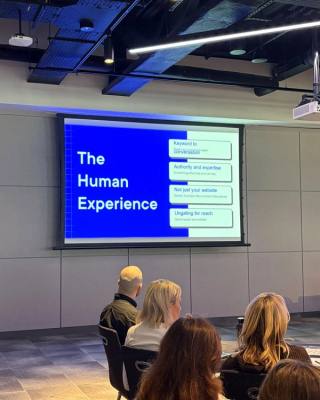At Kooba we like to work in teams. Of course there’s always a lead designer on any given project, but the design process is a collaborative effort.
Prototypes and wireframes are shared for comment and discussion. We work collaboratively to build out appropriate creative responses to the brief. Every week we sit down for our design meeting and talk through every project currently underway. It can get lively.
The reason we do this is reasonably obvious, and people who aren’t paid by the word could sum it up with “two heads are better than one” - although in my experience this isn’t always true and does rather depend on the ownership of the heads in question.
But there’s a little more to it than that. Sometimes the involvement of a broader group of peers also helps avoid an all too common situation - a single designer going off on what we would call “a solo run”: work that reflects innate cognitive biases rather than a rational and effective response to the business needs of the client.
That is, by the way, one of the main reasons to work with an agency in the first place. Individual employees can wander off to unexpected places, and internal teams under (cough) “strong leaders” can do the same. Agencies tend to act as a reality check and stop these biases and quirks manifesting themselves all over your online presence.
Countering bias
Numbers alone are not enough however. We ensure that we’re aware at all times of the dangers of our innate attitudes and biases causing sub-optimal work to be delivered, and as a result we work hard as a team to stop that happening.
That begins with understanding what we are dealing with of course. Most of us have a vague sense of what ‘bias’ means when it comes to decision-making, but instinctively imagine the sort of overt bias that is easy to identify and challenge.
The truth, of course, is that we are blissfully unaware of most of the biases we have (or more accurately can have at any moment in time).
One way to change that state of affairs is to name them. Once we do this, they become significantly easier to spot. This isn’t the time or place to be exhaustive (books can and have been written on this subject) but a shortlist would include the following five evergreen favourites:
- Confirmation Bias. People - professional or otherwise - tend to seek out and promote sources and opinions that agree with their existing beliefs. We all do it to some extent. If the research phase of a project consistently promotes a certain take on the challenge and appears to involve collecting evidence to support a decision that has already been made - there’s a problem.
- Projection Bias. This is a classic familiar to any fans of 70s science fiction. By now we were supposed to be holidaying on the moon but still using fixed video phones. That’s projection bias: a belief that the future is going to be ‘more of today’ rather than something qualitatively different. It can halt creativity and innovation in its tracks and avoid engaging in a meaningful way with challenges coming down the line.
- Action Bias. AKA ‘doing something is better than doing nothing’, or if you prefer the reason goalkeepers always dive for penalties when they would be better standing still. There are complicated psychological reasons we behave in this way. All we have to do is remember that innovation and ‘the new’ for their own sake are not always the right approach to a brief.
- Conformity Bias. For whatever reason, we tend to accept that there’s a certain way to do things and that widely help opinions are accurate - despite all of human history telling us this isn’t so. As a result, we revert to ‘the normal way to do things’. This is not always a mistake, but it certainly can be if it closes off new thinking. And some of the world’s greatest product and marketing triumphs have been a direct result of challenging conformity bias and changing the way the world thinks.
- False Consensus Bias. Last but certainly not least. We all know the colleague who confidently announces that “everyone will want this item to be in the top nav” or “the user won’t scroll that far”. In this instance ‘everyone’ and ‘the user’ roughly translates to ‘me’. Broad generalisations based on personal opinions stem from a belief that deep down we all think and act the same way: false consensus bias.
I hope it’s reasonably evident what harm these biases can cause in a design process.
And as I mentioned earlier, there are many, many more. The colleague who has a particular skillset that just happens to be appropriate for every project they work on is another, for example.
But as we increase awareness we can learn to spot these biases. They are often given away with certain phrases or behaviours, which similarly we should be on the look out for. Few in a creative environment are foolish enough to drop the “we’ve always done it that way” bomb, but you’ll still hear plenty of “this is established best practice” which is the same thing with slightly fancier language.
Fundamentally two things work to counter the risk of unacknowledged biases. They are process and team.
Process helps us stick to the script. If we conduct research professionally, individual opinion becomes less relevant and easier to spot.
But teams above all keep us honest - and on the straight and narrow. That’s why we build our business around them.








